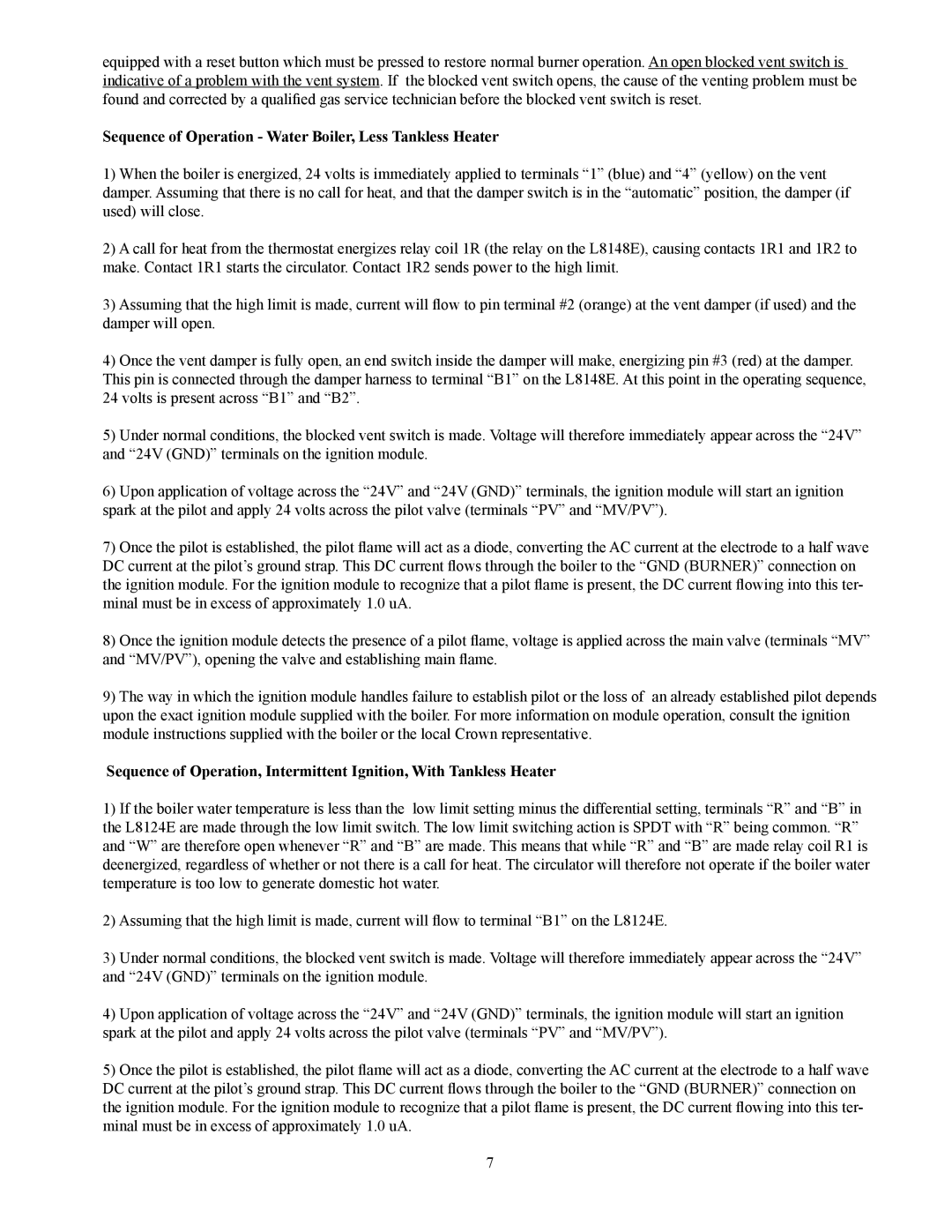32-380ECS, 32-475ECS specifications
Crown Boiler is renowned for its innovative and reliable heating solutions, and its models 32-475ECS and 32-380ECS are prime examples of the company’s commitment to performance and efficiency. These residential and light commercial steam boilers are designed to deliver warmth and comfort while minimizing energy consumption, all within a robust and durable framework.One of the standout features of the Crown Boiler 32-475ECS and 32-380ECS is their adaptability to various heating applications. These boilers are sized appropriately for numerous residential settings, providing heating solutions for homes of different dimensions and layouts. Their large heating capacities, rated at 475,000 BTUs/hour for the 32-475ECS and 380,000 BTUs/hour for the 32-380ECS, are suitable for larger spaces or buildings requiring significant heat output.
Both models utilize a fire-tube design, which promotes efficient heat transfer and helps conserve fuel. This design leads to improved thermal efficiency compared to traditional designs, making them an environmentally-friendly choice for homeowners concerned about carbon footprints. Additionally, the units feature advanced natural gas burners that enhance combustion efficiency, ensuring that less fuel is consumed to achieve the desired heating level.
The Crown Boiler models also come equipped with various safety features, including a pressure relief valve and low water cutoff, which help to ensure safe and reliable operation during the boiler's lifecycle. The combination of these safety mechanisms with robust construction materials ensures long-lasting performance even under demanding conditions.
Furthermore, the 32-475ECS and 32-380ECS are designed for ease of installation and maintenance. They feature a user-friendly control system, allowing homeowners and technicians to monitor performance and make necessary adjustments easily. The serviceability of these units is enhanced by their compact design, which can save space in mechanical rooms and facilitate troubleshooting.
In summary, the Crown Boiler 32-475ECS and 32-380ECS represent an exceptional choice for those seeking efficient, reliable, and safe heating solutions. With their powerful heating capacities, advanced technology, and thoughtful design, these models exemplify Crown Boiler's dedication to quality and innovation in the heating industry. Whether for residential or light commercial use, these boilers provide the performance and efficiency that modern buildings demand.
